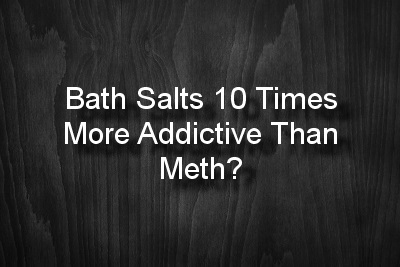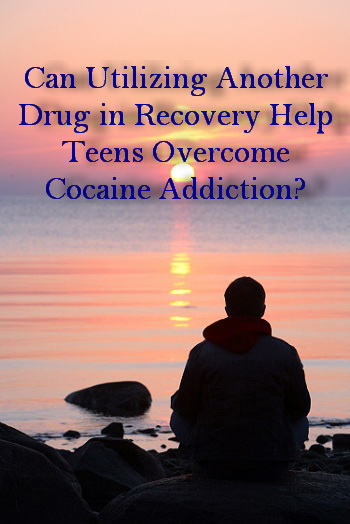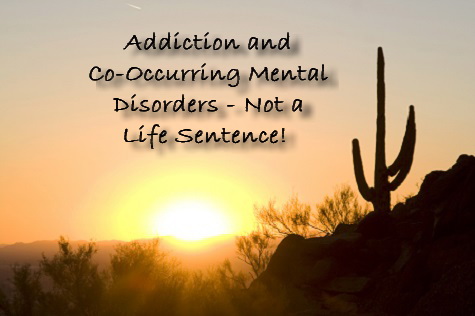29 Aug 2013
Drug May Help Teens Overcome Cocaine Addiction
Teens being treated for substance addiction may soon have a new tool to combat their drug problem. A new study finds that outcomes are improved for cocaine addiction treatment when the drug Topamax is included as part of the strategy for recovery.
Treating cocaine addiction can be challenging. Teens that begin using cocaine can become addicted quickly, and when treatment is sought and completed, relapse can be common. Teens often enter into a cycle of recovery and relapse with cocaine addiction.
Addiction to Alcohol
It is common for teens addicted to cocaine to also be addicted to alcohol. Abuse and addiction of both substances can make treatment complicated. For some, the traditional route of cognitive behavioral therapy is not an effective strategy for recovery to be a permanent state.
Topamax, a drug often prescribed for the purposes of treating epilepsy and, in more recent cases, weight loss, has been shown to help those attempting recovery from cocaine and alcohol addiction.
The Study
The research team from the University of Pennsylvania School of Medicine used a double-blind, placebo-controlled design to test the effectiveness of topiramate in treating addiction, particularly in cases where cocaine addiction is complicated with a dependence on alcohol.
Previous studies have proven the effectiveness of topiramate in treating alcohol addiction. Other studies have shown that it can help prevent relapse in those who have received treatment for cocaine addiction. However, this is the first study to explore its application in treatment for a combined addiction to cocaine and alcohol.
The study’s results are critical because those who struggle with cocaine addiction commonly also struggle with alcohol dependence. Targeting the addictions as a unit may be an effective strategy to make recovery more successful.
The study was conducted over a 13-week period that included 170 individuals who met criteria for alcohol and cocaine addiction. The trial produced mixed results.
The Results
The researchers discovered that the drug was effective at reducing the cravings for alcohol, but actual drinking did not decrease. It was not found to impact cocaine cravings.
However, the study participants that were taking topiramate were more likely to remain in treatment and avoid cocaine use during the last three weeks of the trial when compared to participants who were taking a placebo.
The researchers also found that participants taking topiramate were more likely to benefit from the drug if they reported more severe withdrawal symptoms. Those who indicated a high level of restless behavior, agitation and depressed mood were more likely to report benefiting from topiramate.
Counseling and the Drug
First author of the paper, Kyle M. Kampman, M.D., professor of psychiatry and medical director at the Charles O’Brien Center for Addiction Treatment, explains that while counseling is the first choice for addiction, there are some patients who are not responsive to this strategy.
The results of the study indicate that for those who have a particularly treatment-resistant addiction, the addition of a topiramate treatment in addition to cognitive behavioral therapy may result in better outcomes.
The study’s findings add to a growing body of research that supports the use of topiramate to aid in treating addiction. A previous study conducted in 2005 provided evidence that addicts treated with the drug were able to abstain from cocaine use for three weeks or longer.
The researchers note that the failure of topiramate to reduce alcohol use was puzzling, but may be explained by the severity level of that particular group of participants. The effects may be more visible when an individual has a habit of drinking heavily.
The Test Subjects
The study’s findings were the result of a trial conducted among a group of addicts who had an average age of 45 years and which was largely composed of African-American males. The groups of men examined using the drug of treatment and a placebo were similar in terms of sociodemographic variables or drug and alcohol use.
The findings of the study were published in a recent issue of the journal Drug and Alcohol Dependence.
Drug addiction can affect a wide array of people, but it’s mostly the celebrities who are struggling with substance abuse that we hear about, such as Amy Winehouse and Corey Haim. What are the reasons for all this drug abuse in Hollywood?
First you begin with the basic understanding that addiction is a serious issue, one that doesn’t discriminate and can affect anyone. Toss in celebrity-status, wealth, along with high expectations, and you see how drug abuse can take hold: the euphoric high provides temporary relief; a connection is made in one’s mind; and that connection becomes a crutch whenever moments of extreme stress or depression come up.
Inner Drive to Get Well
Celebrities and drug addiction go hand in hand so often that the stigma appears to be fading, and since there seemingly aren’t penalties for using drugs in their professional lives there’s less motivation to get treatment. For all addicts, an intense passion and drive to get well is needed to build back the sober life they were once living.
This is all a backdrop for a teenager today struggling with substance abuse. Celebrities are constantly in the spotlight, their images and details of their lives flashed everywhere, saturating a teen’s mind, with the lifestyles of these celebrities having a huge impact. If a teen going down the path of addiction idolizes someone who is out partying with nothing to lose, they might not think about the consequences that can come from a life of drug addiction.
Teen’s Similarities to Celebrities
It’s not often that the other side of the story is reported to teens. Celebrities are people too and might have some of the very same insecurities, desires and needs as their teenage fans. Everyone has a lot to lose if they go down the road of substance abuse, and it’s a hard path to come back from.
Along the lines of Dr. Drew Pinsky’s writings, celebrities appear to be genetically wired to be vulnerable to addiction because of their drive to be successful entertainers. Perhaps this is why they seek the high that comes with being in the spotlight, and then seek the artificial high that comes from drugs. It’s important to be aware of what your teen is experiencing and perhaps discover the root of their desire to get involved in these various, dangerous activities.
Britain’s Daily Mail recently ran an article from the mother of a 12-year-old who told how her daughter’s friends are experimenting with marijuana and being expelled from school. Once confined to older teens and young adults, smoking marijuana is now more common among teens and pre-teens.

From states in the U.S. deciding to legalize marijuana to movie stars and rock stars being photographed using it, the message sounding loud and clear to youngsters is that smoking marijuana has no repercussions. The Daily Mail article recounted the stories of several pre-teens who had been either expelled from their private schools or who were using the drug off-campus to avoid expulsion. The obvious point was that young children were getting their hands on marijuana and seemed to have no worries about the consequences.
The British newspaper article did not hesitate to point fingers at singers like Lil Wayne and the late Amy Winehouse among others – stars who make no bones about using marijuana. Public icons, especially music icons, are influential for young teens and pre-teens. Their cavalier attitude and, in some cases, promotion of marijuana use, has more impact than many parents might like.
At Risk
The article also reported on studies in the Commonwealth that have found that when a teen uses marijuana s/he becomes more at risk than alcoholics for developing mental illness. Teens who use pot also tend to have more problems with relationships and have a tougher time finding steady employment. These facts are lost on the pre-teen and early teenager who only knows that they want to be like the superstars they see on TV and splashed across online tabloids.
In Great Britain, one out of every eight arrests for dealing marijuana involves a child. Kids are smoking it. Kids are selling it. Kids don’t think marijuana is anything to stay away from. The facts, of course, are far different but evidently we aren’t getting the message through. There is too much confusion between what is being portrayed and what is being said.
The truth is that early marijuana use can increase the likelihood of later addictions. Teens who use marijuana run a greater risk of depression. One out of every 10 marijuana users will experience severe effects such as anxiety, paranoia and hallucinations. No one can say who will be in the 10 percent.
One of the researchers in Australia who investigated the outcomes for teens who decide to smoke marijuana said use of cannabis can negatively affect teens for years.
Gangs are known for the physical and social threats they pose to rival gang members and their general communities. However, gang membership itself apparently poses a significant threat to mental health. According to the results of a study reported in 2013 by researchers from Queen Mary, University of London, gang members have substantially increased risks for developing harmful psychological symptoms or a diagnosable mental illness when compared to the at-large population.
Gang Membership Basics
Teenagers and people in the early stages of adulthood form the majority of gang members in the U.S., the American Academy of Child & Adolescent Psychiatry reports. However, increasingly, preteens and younger children also become involved in gang activity. While public perception commonly links the presence of gangs to large urban areas, these organized units also appear in smaller urban areas, isolated towns and rural regions. Known consequences of gang participation include increased chances of committing violence or being a target of violence, as well as heightened chances of substance abuse/addiction or incarceration, heightened chances of involvement in risky sexual activity and lowered chances of developing useful work skills or receiving useful academic training.
The presence of certain mental health problems—including attention-deficit hyperactivity disorder (ADHD) and a conduct-related condition called oppositional defiant disorder—can increase a person’s chances of getting involved with a gang. Other known risk factors for joining a gang include living in an area populated by gangs, lack of appropriate adult supervision, exposure to music or other cultural influences that applaud gang participation, lack of work or educational opportunities, a violent home environment and a home environment or family background that includes gang members. A lack of self-esteem or role models also increases gang participation risks. Many individuals cite their gang affiliation as a “home” or stabilizing influence in their lives.
Mental Health Risks
In the study reported by Queen Mary, University of London, a team of British researchers examined the connections between gang involvement, violence and mental illness in a group of over 4,600 men between the ages of 18 and 34. Roughly 2 percent of these men identified themselves as current gang members, while slightly more than 27 percent identified themselves as recent perpetrators of physical assault or some other form of violent activity. The remaining 70.4 percent of the participants described themselves as being non-violent in the five-year period prior to the start of the study.
After reviewing their findings, the authors of the study concluded that both gang members and violent men not affiliated with gangs have significantly increased risks for developing a range of specific mental disorders or symptoms common to several different mental disorders. In the case of gang members, especially prominent illnesses include alcohol or drug addiction, antisocial personality disorder or some other personality disorder, and various types of anxiety disorder. Prominent symptoms common to a number of mental illnesses include hallucinations and/or delusions (also known as psychosis) and suicidal behaviors that culminate in a suicide attempt.
Significance and Considerations
The authors of the Queen Mary, University of London, study believe that they are the first researchers to assess gang members for mental health problems other than substance use disorders. They attributed the increased risks for anxiety disorders and psychosis in gang members to violence-oriented thinking, exposure to violence at the hands of others and fears about future violence exposure. In many cases, these problems manifest in the form of post-traumatic stress disorder (PTSD), a condition once viewed as an anxiety disorder in the U.S., but now classified along with several other illnesses as a trauma- and stressor-related disorder. The authors of the study attributed the rate of suicidal behavior and suicide attempts in gang members to both the psychological strain of mental illness and the impulsive nature of violent behavior, which can turn inward in some individuals.
Generally speaking, gang members and non-gang members who engage in violence are younger than non-violent men and also have a higher rate of unemployment. In the U.K., which has a socialized medical system, gang members also seek access to mental health services more often than non-violent men. The authors of the study note that the men in the participating age range are typically gang “lifers;” they don’t know if the same problems with mental illness appear in short-term or younger gang members.
Of all of the recent designer drugs that have hit the market, few have attracted the level of attention as bath salts. The drugs were initially blamed for the zombie-like, cannibalistic attack in Florida last year, but it was later found that marijuana was the only drug in the attacker’s system. Regardless, the addictiveness of bath salts and the risks associated with their use have become more well-known, leading to a U.S. ban of many of the drugs. Their potency, however, has meant that many users still take them and expose themselves to these risks. They might not turn users into cannibals, but new research suggests that the drugs are actually much more addictive than methamphetamines.
What Are Bath Salts?
They definitely aren’t chemicals you use when you take a bath—they’re just marketed as such in order to make legal punishment more difficult to rain down on the producers. Bath salts are essentially stimulant drugs that have comparable effects to amphetamines and MDMA. In essence, there are several different types of bath salts, and they can be more accurately described as synthetic cathinone compounds—like the active substance in the drug khat. You can’t really know which chemicals are in the substance you’re taking.
There are many risks associated with the drug, with reports of chest pain, rapid heartbeat, aggressive behavior, hallucinations, delusions, paranoia and high blood pressure. Studies on the substances are limited, however, because they’re relatively new, and it’s merely assumed that the long-term effects are comparable to those of methamphetamines because of the chemical similarities. In 2012, there were more than 2,600 calls to poison control centers about exposure to bath salts.
Studies on the substances are limited, however, because they’re relatively new, and it’s merely assumed that the long-term effects are comparable to those of methamphetamines because of the chemical similarities. In 2012, there were more than 2,600 calls to poison control centers about exposure to bath salts.
The Study
These issues (and the relative scarcity of studies addressing the drugs) led some researchers to look at one specific cathinone compound, 3, 4-methylenedioxypyrovalerone—or simply MDPV. The researchers used rats—which have similar neurological “reward” pathways to humans and are therefore useful for studying addiction—that had been trained to press a lever for a reward. They initially received food for their lever-presses, but the researchers had them hooked up to an intravenous infusion of drugs, which became activated for the study period. The rats received MDPV or methamphetamine, with the aim of investigating the differing effects of both drugs.
The Findings
The most shocking result from the research is the finding that the rats who were hooked up to the MDPV pressed the lever for a dose significantly more often than those who had methamphetamine. The researchers point out that the number of lever-presses is analogous to the amount of effort the rats are willing to put in to get a dose of the drug. The rats pressed the lever an average of 60 times to get access to meth, whereas for MDPV the number was 10 times higher, at an average of 600 presses. The results seem to show that bath salts are exponentially more addictive than methamphetamine, with some rats pressing the lever up to 3,000 times for a single dose.
Additionally, the researchers also looked at the repetitive behaviors that are common in humans who take bath salts. They found that the rats receiving higher doses of MDPV displayed many similar behaviors, such as excessive licking, skin-picking and teeth-grinding. The researchers reported that some of the MDPV-dosed rats were so intent on licking the transparent walls of their cages that they were unable to interrupt them.
Conclusion
These findings serve as evidence that bath salts could be notably more addictive than meth, according to the researchers, and they concluded that the potency of the drug means that it’s likely to stick around despite its now illegal status. In other words, the study suggests that bath salts are so addictive that they may join the ranks of commonly abused illegal drugs, rather than being replaced by another temporarily legal designer drug.
Of course, the major problem when it comes to bath salts is in the wide variety of substances and the fact that long-term studies are currently unavailable. The researchers are moving on to both of these areas for future studies and plan to investigate the long-term behavioral impacts of bath salt abuse and the different effects of the newly produced cathinone drugs. The story comes as a stark reminder that legality doesn’t equal safety when it comes to drugs—in fact, the changes made to their chemical structures in order to skirt existing legislation could make them even more dangerous. Bath salts are particularly susceptible to this, because there isn’t one “formula” for the drug—one batch could be drastically, fatally different from another and the user would have no way of knowing.
Daphne sat across the table from her husband and mouthed the words, “I hate you.” Then she painted a charming smile on her face and ordered a salad. She and Sam were out to dinner with his family, something they did only rarely because of what Sam’s mother referred to as “Daphne’s drinking problem.” What no one at the table knew was that Daphne had a gram of cocaine in her clutch and no plans to drink more than one cocktail. To everyone’s surprise, a single margarita is all she had that night.
For the next four weeks, Daphne’s behavior was erratic. She didn’t find herself sneaking bottles of wine or vodka, passed out on the sofa in front of the television or lying in the floor of their shared walk-in closet, crying her eyes out over every conceivable wrong done to her in the past. Instead, she was scarce, hardly ever at home. When he did see her, she was wild with energy and ideas, frenetic to dress and shower and be off again. Her already thin frame appeared unusually slight. It didn’t look as though Daphne had been eating, or really doing anything but moving, fast.
Then on a Sunday afternoon, just like it had started, Daphne was suddenly home again—collapsed on the lawn, so drunk Sam could nearly smell the alcohol from the front door. Ever the co-dependent faithful partner, he walked to his wife and bent to scoop her into his arms. And just like clockwork, Daphne began to slur a litany of praise for her husband, how she could not live without him, how he was perfect in every way.
Days into Daphne’s return, however, she was threatening to stab herself with a kitchen knife if Sam didn’t give her access to all of her pain medication. Daphne received prescription opiates for a cracked cervical vertebra, and Sam sometimes hid them when Daphne’s drinking binges got especially bad. When she took the knife and started carving shallow cuts into the inside of her arm—something Daphne had done many times before, but always in private—Sam knew it was time to do what he had not yet done. He had his wife involuntarily hospitalized. An emergency hospital stay turned into a longer, voluntary in-patient psychiatric stay, and it was there that Daphne was formally diagnosed.
She was an alcoholic. She was a drug addict. She had anorexia. She had bipolar disorder. And she had borderline personality disorder. No one had expected this outcome, least of all Daphne.
Mental Disorders and Addiction
When a person has both a problem with addiction and a mental disorder, he or she is said to have a dual diagnosis (or comorbidity). Many times, substance abuse can mask the signs of mental illness. Traits or characteristics of mental illness, which may otherwise be quite noticeable to close family members and loved ones, cloak themselves in the depressed behavior brought on by excessive alcohol use (alcohol is itself a depressant), or the erratic behavior others exhibit whether using alcohol excessively or when high or seeking drugs.
People with certain mental disorders may seek to “self-medicate” the anxiety or depression that arises as a result of the disorder by consuming alcohol or using drugs, or a combination. One such disorder is bipolar disorder. About 56 percent of people with bipolar have experienced drug or alcohol addiction. The personality disorders, such as borderline personality disorder (BPD), also share a high rate of dual diagnosis. According to the Center for Drug and Alcohol Programs at the Medical University of South Carolina, “Over 50 percent of drug abusers and almost 40 percent of alcoholics have at least one serious mental illness.”
Besides bipolar and BPD, depression, anxiety disorders, schizophrenia and other personality disorders frequently co-occur with substance abuse. Psychiatric issues can begin before or after the onset of substance abuse.
Treatment for the Dual Diagnosed
There is no question that adding disorders and substance issues to the mix significantly compounds an individual’s stress and further complicates treatment options. Those who have co-occurring mental disorders have a higher rate of relapse when it comes to getting sober. But even people with mental disorders and co-occurring substance abuse issues can begin to heal. What helps is an integrated therapeutic approach—where mental health treatment and addiction recovery are not thought of as separate, but fused into an integrated whole. Compartmentalizing too many areas of her life is often how an addict with mental health issues gets to the place in which she desperately needs recovery, so seeing her life as a working whole is important.
Thinking, “I cannot attend to my sobriety if I do not attend to my bipolar disorder” and vice versa is a good way to think about it. It’s quite true, in fact—not simply a bromide offered by practiced faces in the business of therapy.
While Daphne’s situation may seem extreme, it is likely that the deeper part of her issues are connected. When she begins to do the work to unravel what the deeply held beliefs and long-held stories that most affect her mental state are, she may begin to find herself experiencing better balance—and an ability to deal with the boat-rocking experience of finding herself with a half-dozen labels, all too frightening to think about in the beginning.
Becoming educated about the nature of addiction and the reality of mental illness is a good place to start. Choosing to look at one’s life carefully is the opposite of what addiction means. When you wrestle the hydra of addiction and mental illness, you know you’re only going to get more of the same. Better not to go in swinging but with clarity, a willingness to learn and possibly, maybe, a little bit of room for something like hope.
The loved ones of an individual addicted to a destructive substance such as methamphetamine or heroin often watch, perplexed, as the addict destroys their life for a substance that makes them miserable.
A new study may help explain why addicts keep going back to a substance that produces an unpleasant consequence. Researchers at the University of Michigan recently uncovered clues to the change in motivation that often occurs in drug users as they become addicted by testing similar behaviors in animal models.
Read More
11 Jul 2013
Relapse Prevention: Study May Have Found Key to Preventing Stress From Triggering Relapse
For the person who has fought back against drug addiction and has been walking the road of recovery, stress can pose a dangerous threat. For many, the stress of struggling to find work, rebuild relationships, or a sudden loss through death can be enough to trigger a return to using drugs. Stress is a powerful force for people without an addiction history, but when there has been a pattern of soothing stress with substances, the temptation to do so again when the stress temperature rises is great. A recent National Institutes of Health-funded study may have discovered the key to preventing stress from triggering that kind of relapse.
The grant-funded study was actually a partnership between researchers from the University of Pennsylvania and Brown University. The investigation provides a clear outline for the sequence of events within the brain leading up to a stress-induced drug relapse. The study debunked prior hypotheses about the relapse pathway and uncovered evidence that the part of the brain connected to meeting basic needs (the VTA) was pivotally involved.
The study employed rats with a history of cocaine addiction but who were not presently addicted. Some of the rats were treated with a chemical (nor-BNI) that inhibits certain VTA receptors (known as kappa opioid receptors), while the other group of rats did not receive the treatment. Next, all of the rats were made to undergo five minutes of stress-inducing exercise. Observation showed that the treated rats did not revert to cocaine use even after being stressed. The non-treated rats did go back to cocaine.
When we meet our body’s essential needs such as eating and drinking, the brain releases dopamine, a chemical that rewards our behavior with a sense of pleasure. At the same time, healthy brains also release GABA, which modulates dopamine release. Drugs keep GABA from doing their job of controlling the dopamine flow and hence drug use produces an oversized rush of good feelings.

Relapse Prevention with Stress Prevention
In this study, researchers first demonstrated that stressors prevent GABA from slowing down dopamine release. This explains how stress can be a preamble to drug relapse. In the presence of stress, the proper amounts of reward chemicals are disordered. Pleasurable activities become inordinately pleasurable. However, the study team showed that by introducing nor-BNI into the VTA area of the brain, the dopamine controls remained in place even during periods of stress.
By honing-in on the neural underpinnings of a stress-caused relapse, these scientists may have found a way to interrupt the chain reactions that trigger a return to drug use. The study could prove to be a major leap forward toward creating a targeted medication that could remove a domino from the stack and prevent the inevitable result.
Finding a rehab that has not only a great rehabilitation program but a great aftercare program is another way to help prevent relapse. Read Choosing the Right Drug Rehab for Your Loved One to learn more.






